ExoMars: Where to send Europe's robot rover?
- Published
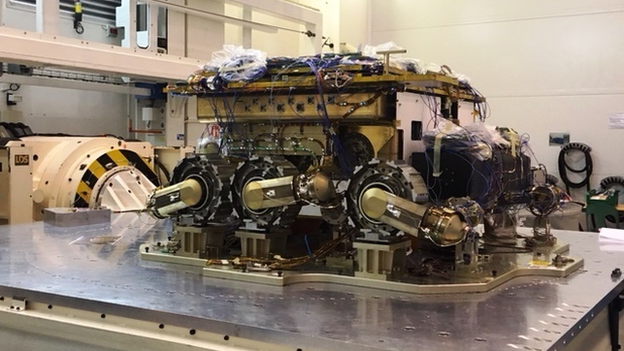
ExoMars: A copy of the rover undergoing testing
Scientists and engineers are to meet in Leicester to choose a landing site on Mars for Europe's 2020 rover.
The six-wheeled robot will be targeted at one of two near-equatorial terrains on the Red Planet.
The ExoMars Site Selection Working Group, external must weigh which of the pair represents the biggest scientific interest but also offers a fair chance of getting down safely.
Landing on the planet is notoriously hard. Most efforts have failed.
Assuming ExoMars can overcome this hurdle, it will use a package of instruments to look for signs of past or present life, external, employing a drill to extend the search below the harsh conditions that persist at the planet's surface.
The meeting at Leicester's university has been convened by the European Space Agency (Esa) and comprises senior academics and officials from industry. Russia, a joint partner on the mission, is also well represented.
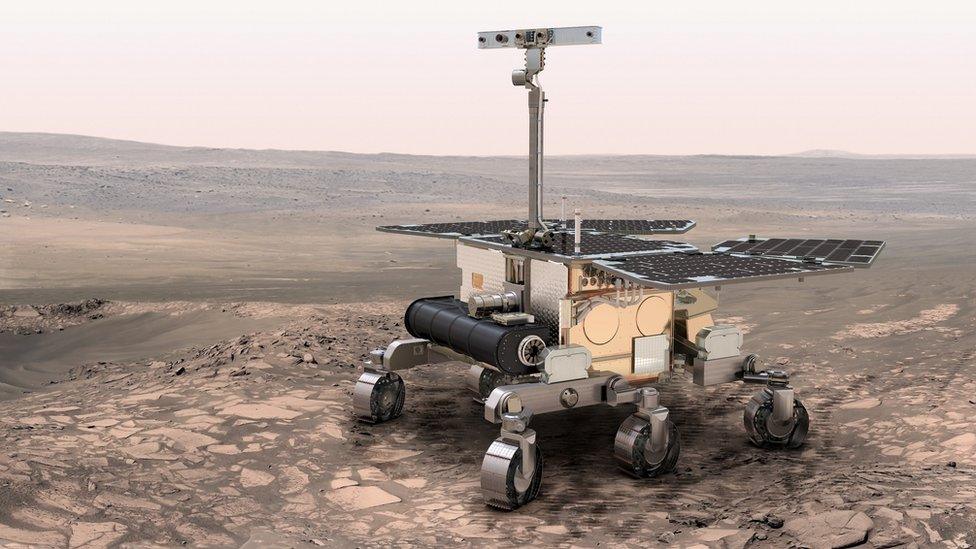
Artwork: The ExoMars rover will search for signs of life
What is the choice?
The working group will spend Thursday and Friday discussing the merits and shortcomings of Oxia Planum, external and Mawrth Vallis, external.
Scientifically speaking, these locations are quite similar. They are ancient landscapes that contain abundant clays - the type of sediments which result from the alteration of rock through prolonged contact with water.
It is in just this kind of setting where you might find evidence for ancient microbial life.
Curiosity, the American rover currently operating on Mars in a deep bowl known as Gale Crater, has detected clay minerals in mudstones that very probably formed in lakes and the streams that fed them.
The sediments of interest at Oxia Planum and Mawrth Vallis likely had similar sorts of origins.
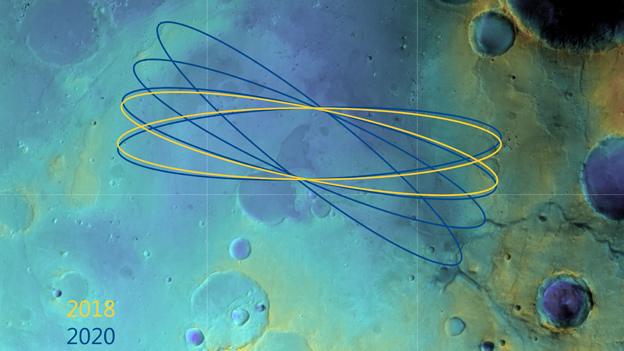
Oxia Planum was the preferred choice had the rover launched in 2018
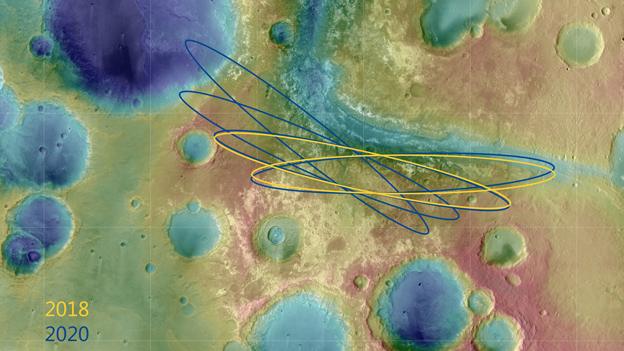
Mawrth Vallis: The ellipses describe zones that can be targeted with confidence
Is science the only consideration?
Far from it. Great scientific prospects count for nothing if you cannot land the robot in one piece.
Europe's previous touch-down effort, the Schiaparelli mission, crashed into Mars' surface in 2016 when the probe's onboard computer became confused about its altitude during the descent and switched off the braking thrusters far too early.
Schiaparelli smacked into the ground at over 300km/h.
ExoMars will be using a similar entry, descent and landing strategy that incorporates a capsule, a parachute system and retro-rockets.
A factor that will bear heavily on the Leicester discussions is the knowledge that Oxia is at a much lower elevation than Mawrth - by about 1,000m. This would give the descending robot's parachute much longer to bite Mars' thin atmosphere and slow the supersonic approach towards the surface.
What else has to be thought about?
In addition, Mawrth's position is slightly to the north of Oxia.
The angle of approach required to get to this higher latitude necessarily produces greater uncertainty in the eventual touch-down point.
Engineers talk of confidence zones that are elliptical in shape. For both locations these ellipses are 19km wide, but, in the case of Mawrth, the length is 190km. For Oxia, it's 104km.
High-resolution satellite images have been acquired of both sites.
These will have been examined for hazards such as steep slopes and deep gullies, and also for the preponderance of large boulders. ExoMars will come down on its Russian-built lander. If the legs find very uneven ground, the rover might not be able to drive off the platform, or, worse still, be tipped over.
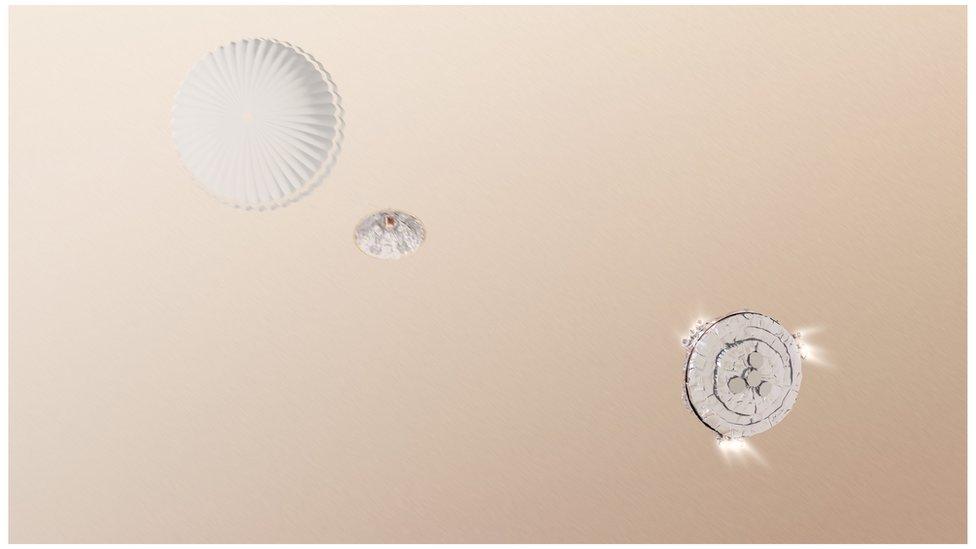
Artwork: The Schiaparelli robot hit the ground at high speed
How is the rover's development progressing?
This is a mission that has experienced delay after delay.
Originally set for 2011, the launch from Earth slipped to 2013, to 2016, to 2018, and is now scheduled for mid-2020.
This means all the various components of the mission - the rover, its landing mechanism and the cruise vehicle that shepherds everything from Earth to Mars - really need to be at Russia's Baikonur launch site in about a year's time to begin final integration and testing.
Officials say the schedule, despite some hiccups, is on track.
Clear signs that we are getting close include the inauguration of the rover's mission control in Turin later this month.
One very good piece of news to report is the restoration of autonomous navigation to the robot. This software will enable ExoMars to find its own way across the ground without the constant intervention of engineers back on Earth, and should speed up dramatically its ability to survey scientifically interesting places to drill.
When do we get a decision?
America is also sending a rover to Mars in 2020. This is, broadly speaking, a copy of the Curiosity rover, although it will have different instrumentation and seek to find rock samples it cache for later return to Earth laboratories.
As with ExoMars, this mission is going through a site selection process, external. This should produce a recommendation sometime before the end of the year.
The Leicester working group's deliberations are closed to the media, but an announcement on its preference is promised for Friday afternoon.
Protocol requires this be signed off by the heads of Esa and the Russian space agency (Roscosmos), external before it becomes ExoMars' official destination, but it is highly unlikely that the Leicester choice would be blocked.
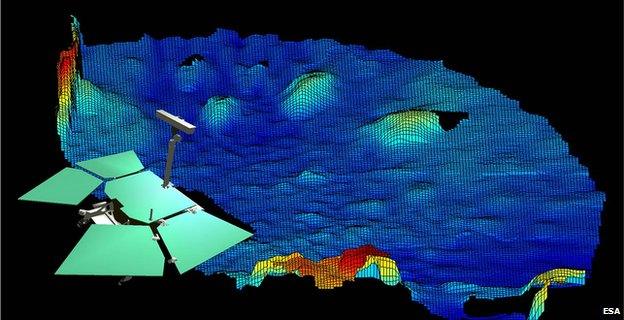
Autonomous navigation software builds 3D models of the terrain ahead of the rover
Jonathan.Amos-INTERNET@bbc.co.uk, external and follow me on Twitter: @BBCAmos, external
- Published20 July 2018
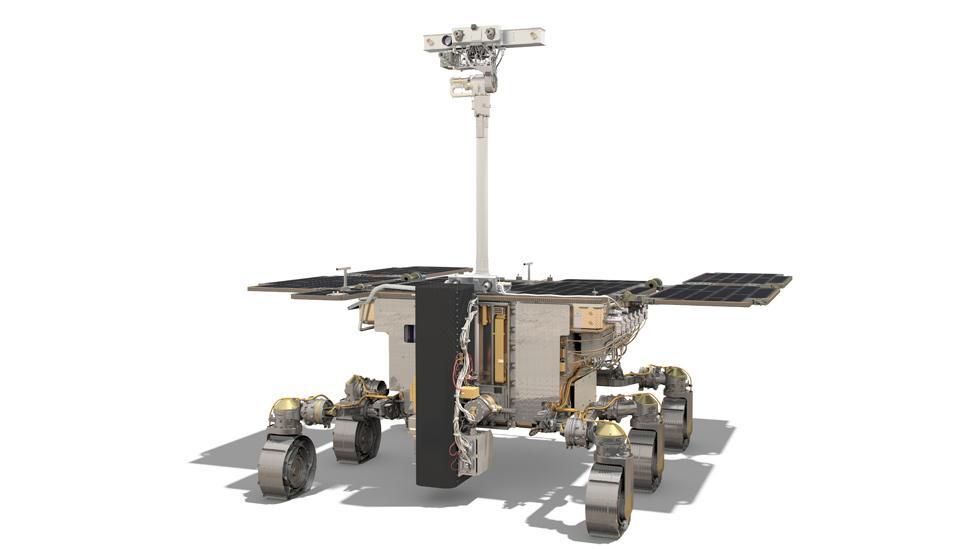
- Published6 July 2018
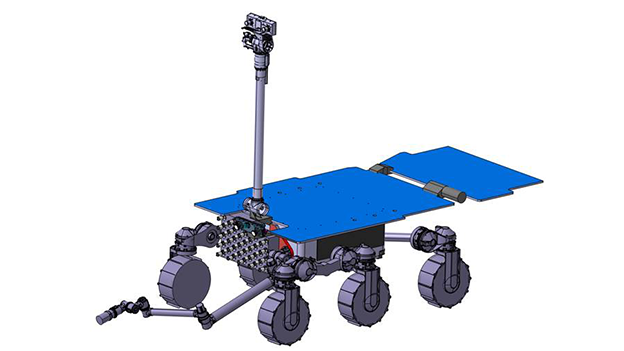
- Published19 June 2018
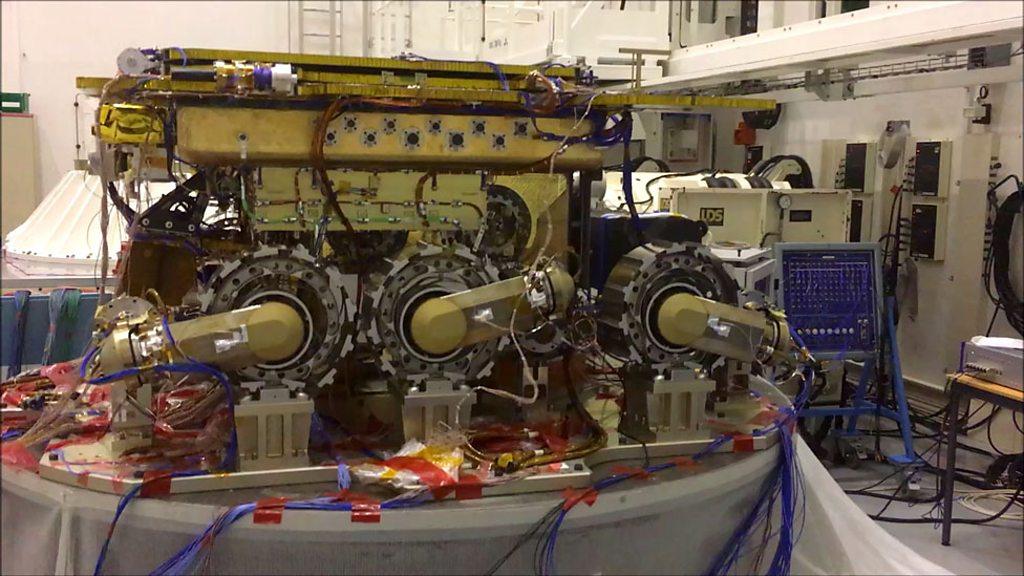
- Published20 April 2018
- Published18 June 2017
